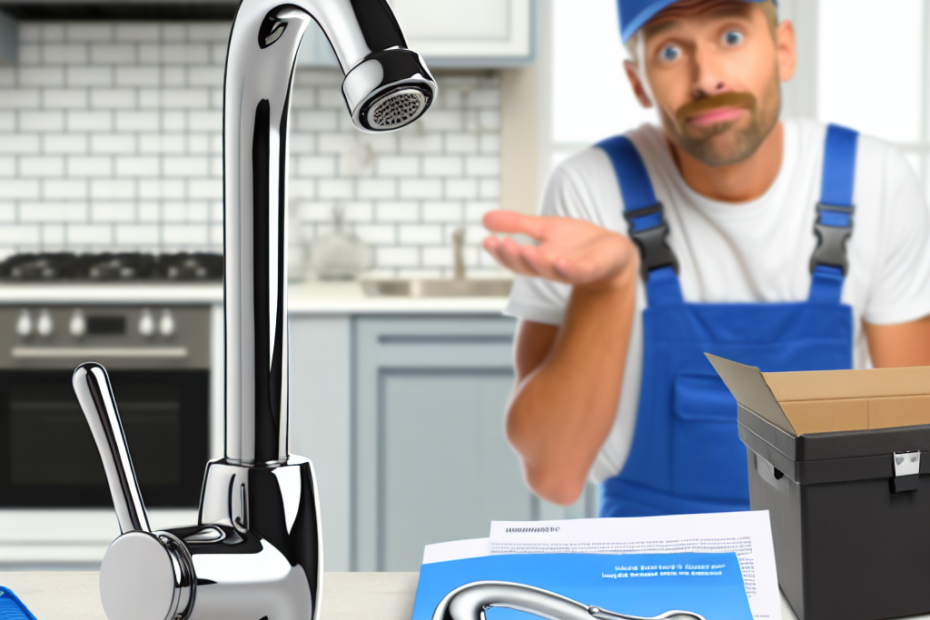An Ultimate Guide To Delta Kitchen Faucet Repair
Delta kitchen faucets are one of the most popular and reliable fixtures in homes. But like any appliance, they can sometimes run into problems. Whether it's a leaky faucet or a faulty sprayer, this guide will help you understand the common issues and how to fix them!
Common Problems with Delta Kitchen Faucets
Before diving into repairs, it helps to know the common problems you might face with your Delta faucet. Here are a few:
| Problem | Symptoms |
|---|---|
| Dripping Faucet | Water leaks when the faucet is off |
| Low Water Pressure | Weak water flow from the faucet |
| Sprayer Malfunctions | Sprayer doesn’t retract or leaks |
| Handle Stiffness | Difficulty turning the faucet handle |
Understanding the Anatomy of Your Faucet
To properly fix any issues, knowing the parts of your faucet is essential. Here’s a basic outline:
- Spout: Where the water comes out.
- Handle: Used to control the flow and temperature of the water.
- Cartridge: Controls the flow of water; if faulty, it can cause leaks.
- Sprayer: A detachable part for rinsing dishes.
Understanding these components can make repairs easier.
Tools Needed for Faucet Repair
Before you start working on your faucet, make sure you have all the necessary tools. Here’s a simple list:
- Adjustable Wrench: For loosening and tightening nuts.
- Screwdriver: Usually Phillips or flat-head, depending on your faucet screws.
- Pliers: Useful for gripping and pulling parts apart.
- Replacement Parts: Such as cartridges and seals, specific to your Delta model.
- Rags or Towels: For cleaning and drying during repairs.
Step-By-Step Repair Process: Fixing a Dripping Faucet
A dripping faucet can be quite annoying. Here’s how to fix it:
Step 1: Turn Off Water Supply
Locate the water shut-off valves under the sink. Turn them to stop the water supply to your faucet.
Step 2: Drain the Faucet
Turn on your faucet to allow any remaining water to drain out. This will minimize spills during repairs.
Step 3: Remove the Handle
Using a screwdriver, remove the handle screw, then lift the handle off. If it's tough to get off, gently wiggle it back and forth.
Step 4: Take Out the Cartridge
Using an adjustable wrench, loosen and remove the retaining nut. Carefully pull out the cartridge from the faucet body.
Step 5: Inspect and Replace Seals
Check O-rings and seals on the cartridge for wear or damage. If they are cracked or brittle, you will need to replace them.
Step 6: Reassemble
Put everything back together by reversing your steps. Remember to tighten securely but do not over-tighten, as this can cause damage.
Step 7: Turn On Water Supply
Once you’ve reassembled your faucet, turn the water supply back on. Test if the dripping has stopped.
Fixing Low Water Pressure
Low water pressure can be frustrating. Here’s how to troubleshoot this issue.
Step 1: Check Other Faucets
Before assuming something is wrong with your Delta kitchen faucet, check other faucets in your home. If they are also slow, you may have a larger plumbing issue.
Step 2: Inspect Aerator
Take out the aerator at the end of the spout. Clean it with vinegar to remove any mineral deposits. Rinse and replace it.
Step 3: Check for Blockages
Inspect the supply lines for any kinks or clogs. Fix any obstructions to restore normal flow.
Step 4: Examine Valve
If the faucets still perform poorly, it might be a problem with the valve. You'll need to take apart the faucet as previously described and check the valve.
Dealing With Sprayer Problems
Sometimes, the sprayer can malfunction. Here's how to address it.
Step 1: Check Connections
First, check if the sprayer hose is securely connected to the faucet. If it’s loose, simply tighten it.
Step 2: Inspect the Hose
Look for any kinks or cracks in the hose. If it's damaged, you'll need to replace it.
Step 3: Clean Sprayer Head
Remove the sprayer head and soak it in vinegar to clear out mineral build-up. Rinse it thoroughly before reinstalling.
Step 4: Test the Sprayer
Reattach the sprayer and test it before putting everything away. Ensure it retracts properly and doesn’t leak.
Handling Stiff Handles
Sometimes, the handle can become stiff, making it hard to adjust the water flow and temperature.
Step 1: Lubricate
Apply a little bit of plumber's grease to the handle base. This can reduce friction and make it easier to operate.
Step 2: Inspect Cartridge
If lubrication doesn’t help, remove the handle and inspect the cartridge. If it looks worn out, consider replacing it.
Maintenance Tips for Longevity
Regular maintenance can prevent many issues. Here are some quick tips:
- Clean Regularly: Wipe down the faucet with a soft cloth to avoid build-up from hard water.
- Check for Leaks: Periodically inspect for leaks around the base and handles.
- Replace Washers: Over time, washers can wear out. It’s best to replace them every couple of years.
- Run Water: Regularly run the water to keep the plumbing clear and functioning.
When to Call a Professional
Although DIY repairs can save you money, certain situations may require professional help, such as:
- Major Water Leaks: If there's flooding or severe leaks.
- Replacing the Entire Faucet: If the unit is extensively damaged.
- Complex Plumbing Issues: If you suspect problems with your home's water lines.
Conclusion
Repairing your Delta kitchen faucet doesn’t have to be scary or overwhelming. By understanding the anatomy of your faucet and familiarizing yourself with common problems, you can take on most repairs with confidence. Always keep your tools handy, and don’t hesitate to consult a professional if things get too complicated.
By following this guide, you can ensure your Delta kitchen faucet will be functioning properly for years to come! Happy fixing!
